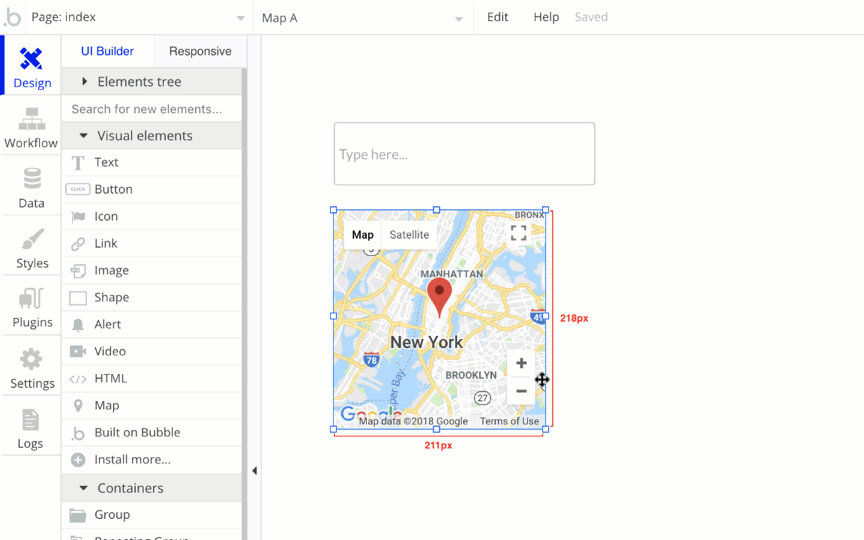Meet Bubble a bootstrapped startup that has been building a powerful service that lets you create a web application even if you don’t know how to code. Many small and big companies rely on Bubble for their website.
I have to say I was quite skeptical when I first heard about Bubble. Many startups have already tried to make coding as easy as playing with Lego bricks. But it’s always frustratingly limited.
Bubble is more powerful than your average website building service. It recreates all the major pillars of web programming in a visual interface.

It starts with a design tab. You start with a blank canvas and you can create web pages by dragging and dropping visual elements on the screen. You can put elements wherever you want, resize maps, text boxes, images and more. You can click on the preview button to see the development version of your time whenever your want.
In the second tab, you can create the logic behind your site. It works a bit like Automator on the Mac. You add blocks to create a chronological action. You can set some conditions within each block.
In the third tab, you can interact with your database. For instance, you can create a sign up page and store profile information in the database. At any time, you can import and export data.
There are hundreds of plugins that let you accept payments with Stripe, embed a TypeForm, use Intercom for customer support via chat, use Mixpanel, etc. You can also use your Bubble data outside of Bubble. For instance, you can build an iPhone app that relies on your Bubble database.

Many small companies started using Bubble, and it’s been working fine for some of them. For instance, Plato uses Bubble for all its back office. Qoins and Meetaway run on Bubble. Dividend Finance raised $365 million and uses Bubble.
The startup takes care of hosting your application for you. Every time you resize your instance as your application gets bigger, you pay more.
Even though the company never raised any money, it already generates $115,000 in monthly recurring revenue. Bubble is still a small startup, which can be scary for bigger customers. But the company wants to improve the product so that customers don’t see the limitations of Bubble. Now, the challenge is to grow faster than customers’ needs.

Source: Tech Crunch


